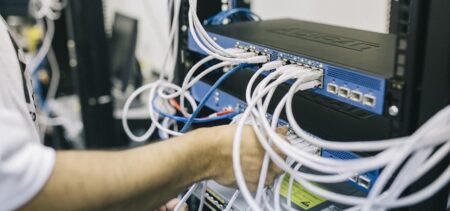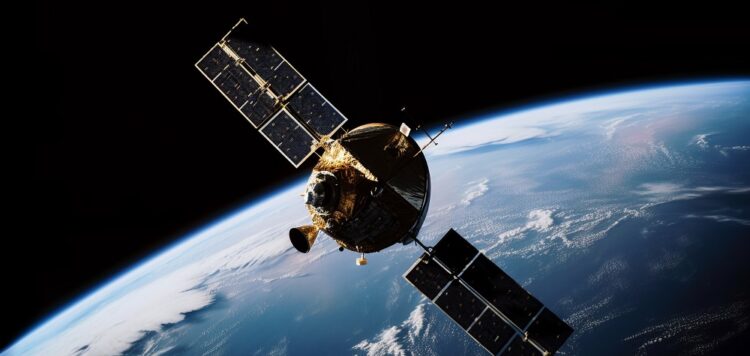In the Battle of the Billionaires, Bezos and Musk go head-to-head in the telecommunications sector, with Project Kuiper being launched to challenge Starlink. Amazon is looking to solve the issue of connectivity in unserved and underserved communities around the world, touting Project Kuiper as a key driver of ICT access.
In October, Amazon made huge strides toward realizing Project Kuiper with the successful launch of two prototype satellites. The team has been hard at work testing the end-to-end communications payload and network. Within 30 days, they had successfully demoed the network and confirmed validation of its priority systems and subsystems. The groundbreaking discovery during the demo was the announcement that the optical inter-satellite link (OISL) was part of the testing. This was kept confidential until now, indicating Amazon’s satisfaction with the performance.
100% success rate
The Protoflight mission reported a 100% success rate, with Amazon testing the most important systems and subsystems of the network. This included flight computers and solar arrays, the propulsion system, and an advanced radio frequency (F) communications payload, which produced a nominal or better performance after the launch. These tests have provided Amazon with data that validates the system architecture and satellite constellation design. Additionally, it enabled the team to test the efficacy of the satellite constellation in real time using 4K video streaming and two-way video calls.
Led by Rajeev Badyal (interestingly, a former Starlink executive), Kuiper has quickly evolved from an idea to advance global connectivity to a viable project teeming with promise. With plans to launch a constellation of 3,600 satellites, the team still has a long way to go before Kuiper is commercially available, but the data insights from the Protoflight mission will be invaluable in providing a clear way forward. Badyal is also encouraged by the excellent results on Kuiper’s maiden space trek, citing the expertise and dedication of the team that made it possible.
With Project Kuiper, Amazon is focusing on providing internet connectivity to underserved communities around the world. To do this, they’ve designed all the key components of the Kuiper system with affordability, internet speed, and reliability in mind.
The Protoflight allowed them to test the technology (both hardware and software) to ensure the infrastructure delivers well on its promise. The Protoflight mission not only allowed the team to test the working components and their ability to withstand its launch into space, but also demo the product and its connectivity by testing the on-the-ground infrastructure. With ground gateway stations in Texas, Hawaii, and Mauritius, Project Kuiper validated the interoperability of Project Kuiper with Amazon Web Services.
The systems tested include satellite structures and mechanics, flight computers, propulsion systems, solar power generation and distribution systems, batteries, and reaction wheels. One of the highlights of the testing process was initiating the advanced radio frequency communications payload, which is used to transmit data over the Kuiper network. The Protoflight mission confirmed the key systems and subsystems work effectively and provide high-speed, quality internet connectivity.
Stress test: Experimenting in orbit
Successfully transmitting end-to-end data through space is as complex and intricate as it sounds. The Protoflight tests involving the radio frequency communications payload utilize both parabolic and phased array antennas, as well as innovations that enable Kuiper to transmit customer data traffic across the network. The communications payload was the last crucial element that the Kuiper team needed to test and prove in space; this was successfully completed in early November through a series of communications that sealed the deal. Project Kuiper works! Data was transmitted both ways (end-to-end) using the AWS fiber-optic connection to ground gateway stations, up to the satellites, and then back down to a customer terminal at the test location.
The first demonstration went through the basics of online shopping; logging in to an Amazon Prime account, searching for a product, adding to the cart, and then checking out. During the second demonstration, the streaming quality was tested using Prime Video. The team logged into the app, searched for a movie (an Amazon Original, naturally), and streamed it in ultra-high definition (UHD) 4K video. Finally, to evaluate the network throughput and latency, the team conducted a two-way video call, using Amazon Chime as the third demonstration, which also required “full duplex”—the use of both antennas sending and receiving data simultaneously. While the full mesh network hasn’t been established yet, relying on the two satellites meant the team only had small windows (30–120 seconds) where contact could be initiated as the satellites orbited over the test site. When Kuiper is commercially available, with full deployment of all the satellites, there will always be a satellite in the range of a customer, and the software-defined network will enable the transmission of data from one to the next, providing uninterrupted connectivity.
Preparing to serve a wide range of customers
While the Protoflight was crucial to prove the “space case” and validate that the technology actually works while in orbit, it also provided testing and data for teams on the ground. Their main aim was to demonstrate and then improve on satellite processing capabilities, launch, and mission operations; key areas ahead of the deployment of the full Kuiper constellation. Going into 2024, the team will conduct more experiments and monitor how the prototype satellites fare in space. The aim of Project Kuiper is to provide connectivity to millions of customers around the world. Scaling operations and services is paramount to achieving the goal of servicing households, businesses, enterprises, and even government agencies. The importance of innovation and investment in infrastructure are key to rapid growth.
Project Kuiper vs Starlink
As an industry estimated to reach $18.59 billion by 2030, Project Kuiper is not the only viable company in the sector. In fact, in many ways, they’re playing catch up to Elon Musk’s Starlink, which is already commercially available. Experts in the industry have already started to draw comparisons, largely due to the corporate rivalry that exists between Bezos and Musk.
Starlink was launched in 2015, and is currently available in 60 countries, with many more on the waitlist for 2024. Comparatively, Project Kuiper was initiated in 2019 and will go live sometime next year. Both projects utilize low earth orbit (LEO) satellites, but it seems Starlink may have the upper hand when it comes to the launch aspect, driving costs down thanks to discounts from sister company, SpaceX. The Falcon 9 and Falcon Heavy rockets have been used to launch more than 5,000 satellites that currently make up the Starlink constellation, with the company planning to deploy close to 12,000. Project Kuiper, on the other hand, has just launched its first two satellites, with plans to deploy a further 3,200. While Amazon’s sister company Blue Origin is also in the business of space exploration, they are still outsourcing the launch of the satellites, and thus aren’t privy to the same discounts that Starlink has, which will certainly make the price comparison an interesting topic when Kuiper finally launches.
While Starlink clearly has the upper hand at the moment, Kuiper cannot be counted out because what they lack in experience, they make up for in quality. Data from the experiments and tests indicate that Team Amazon may have the win when it comes to internet speed, a major consideration for many internet users. Using the larger Ka-band, Kuiper is expecting to deliver three types of performance-based packages with speeds up to 100 Mbps (Mini), 400 Mbps (Regular), and 1,000 Mbps (High-Performance). Starlink, on the other hand, is on the lower Ku-band spectrum, where it shares frequencies with multiple competitors and provides users with download speeds of up to 200 Mbps.
Conclusion
In another space race, satellite internet providers are looking to increase access to the internet around the world. Amazon’s ever-expanding universe of services has entered the satellite internet industry, with Project Kuiper already making massive strides in its early stages, boasting a 100% success rate on its Protoflight mission, confirming the validity of all the systems and subsystems in the network. With just two satellites in orbit, the team has also been able to establish an internet connection and has conducted three successful demos. While there’s still a lot that needs to be done before Kuiper is in our homes, there’s a lot of optimism and well-deserved hype around the product and its service, which could see people in even the most remote parts of the world, realizing their right to internet access and connectivity.





























